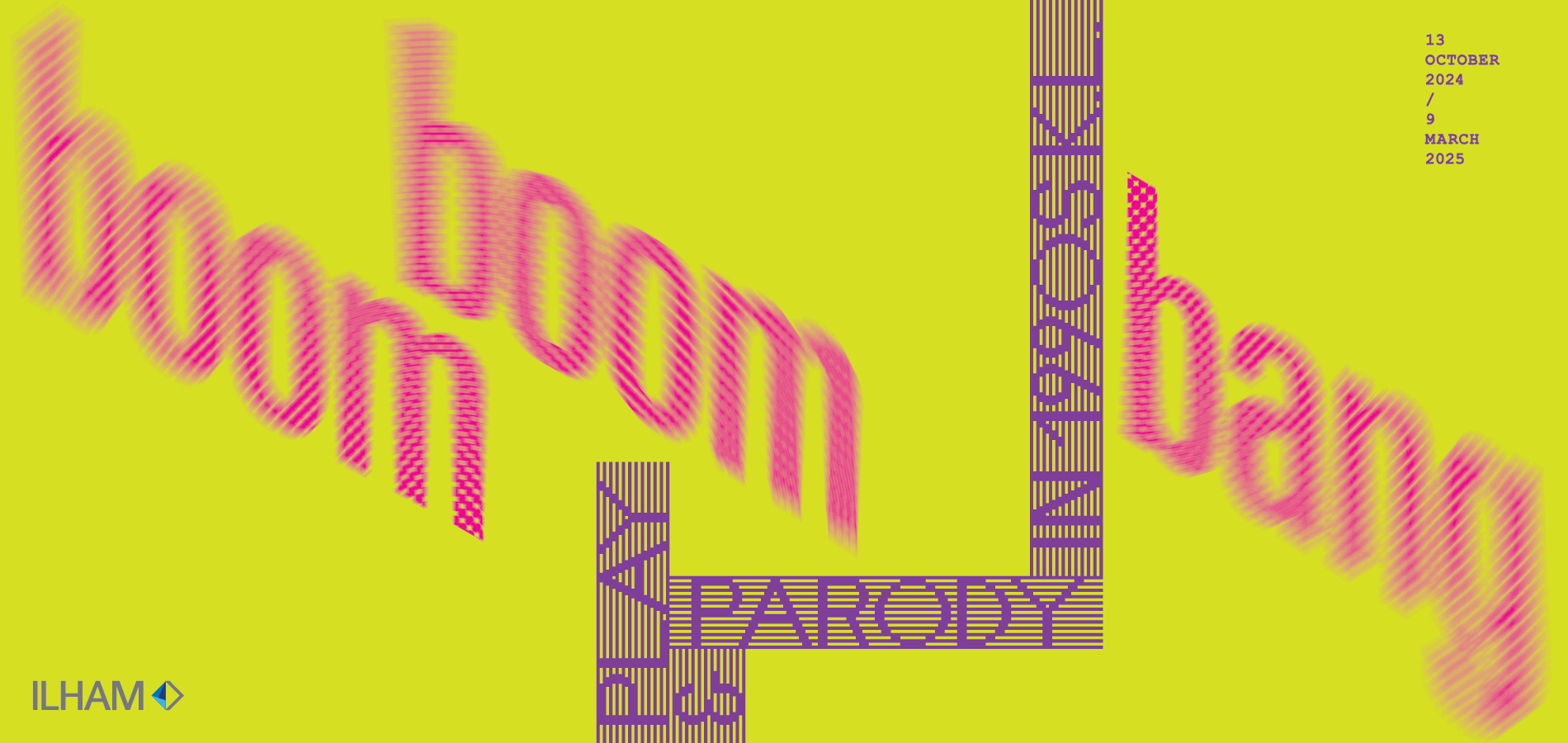Boom Boom Bang: Play & Parody in 1990s K.L.
13 October 2024 – 9 March 2025 (Level 5)
The 1990s in Kuala Lumpur were characterised by a surge in political and economic confidence. During this time, Malaysia saw robust economic growth and a heightened sense of national pride. Buoyed by the Asian Economic boom, the city of Kuala Lumpur, commonly referred to as K.L., witnessed a dynamic period of expansion, particularly evident in the realms of culture, art, performance, and entertainment, driven by a lively urban culture that fostered cross-disciplinary collaboration. The city itself underwent rapid development, with skyscrapers and highways built by a new wave of migrant workers, forever transforming the cityscape. However, this optimism was abruptly halted in 1997 by the Asian financial crisis and ensuing ideological rifts.
The title of the exhibition is a direct reference to a documentary video titled Boom Boom Bang, directed and produced by Berlin-based Zakiah Omar and Hanno Baethe in 1998. The documentary, featuring reflections from performing artists and writers, explores how artists navigate and critique the societal and cultural shifts of the time. In an opening reflection for the documentary, theatre director and writer Jo Kukathas observes, “There’s a huge weight of information and propaganda about one way of thinking and one way of looking at things, and I think we’re just there adding a little weight to the other side.”
Boom Boom Bang: Play & Parody in 1990s K.L. delves into the rich and complex narrative of a city in flux, told through the voices of artists, performers, and writers who helped shape an emerging counterculture. At the heart of this exhibition are the twinned concepts of parody and play, which serve as entry points into understanding the cultural landscape of 1990s Kuala Lumpur. Parody, with its use of humour to critique power and authority, became a potent tool for artists to push back against dominant narratives. This was a time when the city’s rapid development and globalisation were often portrayed in a positive light, yet beneath the surface and away from the mainstream, artists were challenging these ideals and suggesting alternative ways of living and working in the city.
Play, on the other hand, is represented through the interdisciplinary experimentation and spirit of DIY that characterised a decade of collaboration across artistic forms. As new spaces and communities emerged across the expanding city, artists from diverse backgrounds came together, often resulting in cross-disciplinary collaborations. These collaborations not only fostered creativity but also provided a platform for alternative voices and perspectives to thrive.
The exhibition highlights the gradual emergence of this counterculture, driven by the rapid urbanisation of Kuala Lumpur, and the growing availability of the internet. As the city grew and evolved, so too did its cultural scene, with numerous spaces and communities spontaneously forming to accommodate and mobilise alternative views.
Boom Boom Bang revisits the coming of age of Kuala Lumpur’s artistic culture. In showcasing significant interdisciplinary art practices of the 1990s, the exhibition features archival documentations across both performing and visual arts, encompassing photographs, objects, video recordings, sketches, correspondences, posters, and brochures from significant events. It explores the increasing visibility of diverse cultural expressions across different sites and spaces, revealing unexpected connections as artists grappled with the now-ness of their contemporary experiences that challenged conventional understandings of identities and belonging in Malaysia.
The exhibition will be featuring work by ahmad fuad osman, azizan paiman, bayu utomo radjikin, carburetor dung, chuah chong yong, five arts centre, hasnul jamal saidon, hatta azad khan, ismail zain, instant cafe theatre, labDNA, liew kung yu, niranjan rajah, nur hanim khairuddin, raja shahriman raja aziddin, ray langenbach, sidney tan, yee i-lann, wong hoy cheong, zakiah omar & hanno baethe, zulkifli yusoff.
Curated by Simon Soon, Rahel Joseph, Azzad Diah, Ridhwan Saidi.
2015-2025 © ILHAM GALLERY. ALL RIGHTS RESERVED. WEB DESIGN BY TOMMY NG


